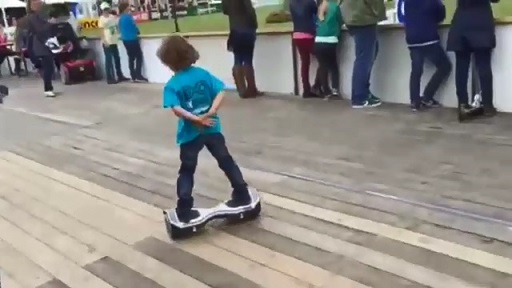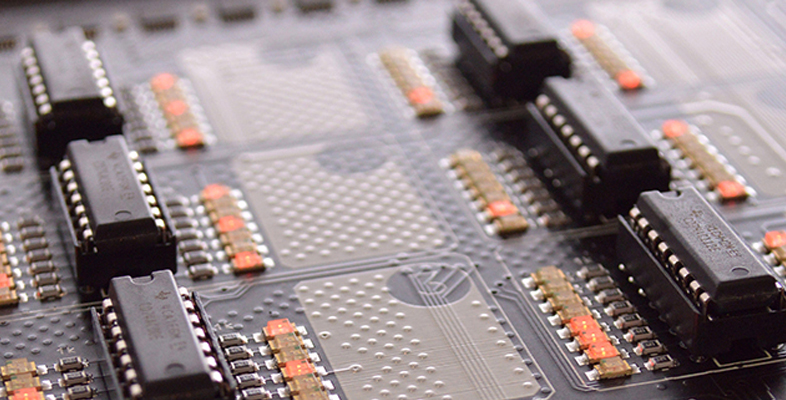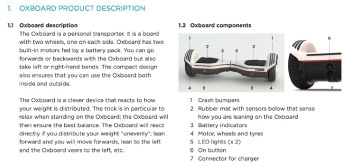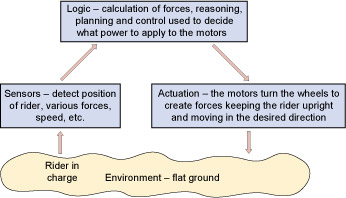1.2 The sensing–logic–actuation cycle in practice
Watch the video below, which is a promotional video for Oxboard showing a child riding one of their two-wheeled devices. It is remarkable how the board responds to the way the rider moves his feet and body, and how controllable it is.

Transcript: A child riding an Oxboard
[BACKGROUND NOISES]
[MUSIC PLAYING IN BACKGROUND]
[BACKGROUND NOISES]
[GIGGLING]
[CHILD SPEAKING]
[MUSIC PLAYING IN BACKGROUND]
[BACKGROUND NOISES]
[BELL RINGING]
[MUSIC PLAYING IN BACKGROUND]
[BACKGROUND NOISES]
Figure 6 gives some of the details of the Oxboard’s construction and use.
Think about the sensing–logic–actuation cycle for the Oxboard transporter system. The board has sensors to detect the way the rider moves his feet and body. It uses logic to compute all the complicated forces associated with the motion; based on that information, it controls the two actuators (motor-driven wheels) to transport the rider in his desired direction.


